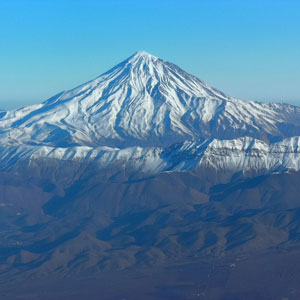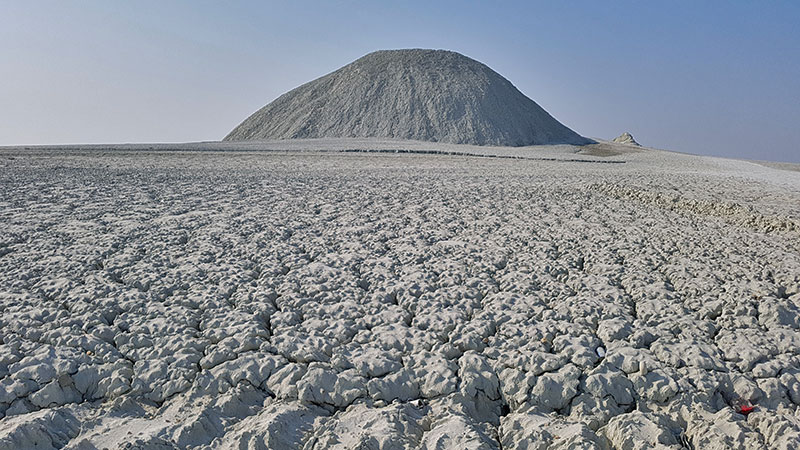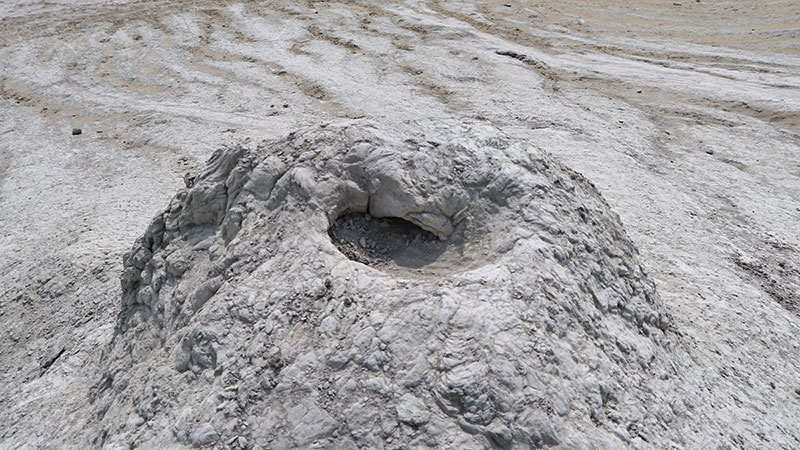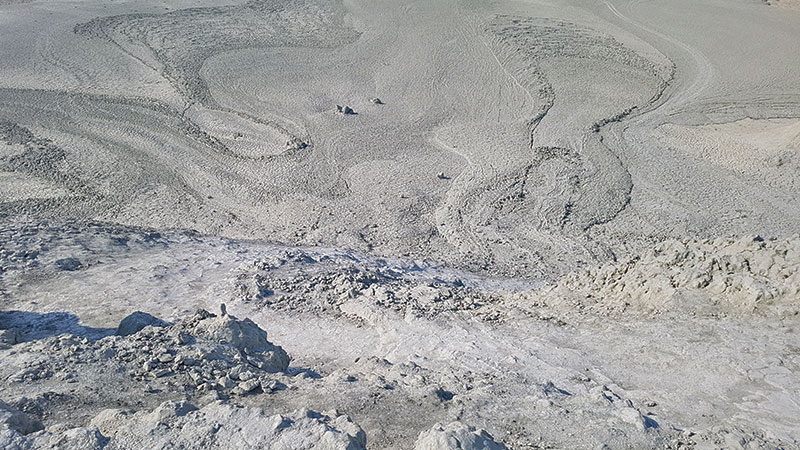 Signin with Google
Signin with Google Signin with Facebook
Signin with Facebook
 Places,Nature
Places,NatureMud Volcano, the Earth Belly Button

Mud volcano, a strange geological attraction
The grey, intriguing giant seems to sleep calmly in the vast plain. If you are curious enough to walk through the dry, flaky ground and climb up to the top, you will have a jaw-dropping scene in front of you. There you will see a wide hole from which the giant gurgles ash grey bubbling mud. This slippery substance has the magical power to throw you to good messy childhood days by the instant touch when you play joyfully with mud. This muddy giant is one of the strangest geographical phenomena of the world, a Mud Volcano.
What is a mud volcano?
Mud Volcano or Mud Dome is a rare geological phenomenon in the form of a cone or pond, created by the continuous extrusion of mud. Like a volcano, this distinctive feature throws up minerals with mud, water, and gases but no lava.

This splendid phenomenon exists in spots where underground gases like carbon dioxide or methane find their way out through weak and clay-like soil. With their escaping, these gases bring water and mix it with the soft ground in the form of mud to the surface. The erupted mud is rich in sodium, chloride, magnesium, potassium, iron, iodine, and calcium.
The mud domes may show their activity by a few bubbles, but sometimes they fling mud kilometres away. Sometimes the fermentation of mud is accompanied by mild explosion sound and the slight vibration of the earth.
The constant flow of mud over long years of activity has formed mud domes, the height of them vary from 1 or 2 meters to 700 meters. The temperature of released mud during eruption categorizes mud volcanoes to two groups of hot or cold effusions.

Why are mud volcanoes important?
These extraordinary muddy giants attract geologists, ecologists, and health and well-being tourists every year. The mud and slurry have proved health benefits. The oozy mud cures Rheumatism, Arthritis, muscle cramps, and skin diseases. For these medical benefits, there are some popular mud baths like in Baku, the capital of Azerbaijan, where you can enjoy your time by diving and dabbling in the mud. Of course, playing with mud has been an exciting and funny experience since childhood! It is a kind of adventure full of fun.
Where are the mud volcanoes in Iran?
Alpine-Himalayan belt, stretching from the Azores in the west through the Mediterranean and the Middle East to the Himalayas in the east, is the home of mud volcanoes. Iran is one of the few areas where you can see mud volcanoes. Mostly these mud domes are in the northeast and southeast of Iran: in Golestan, Hormozgan, and Sistan & Baluchestan provinces.

• Naftalijeh Mud Volcano
Have ever seen pink mud?!
There is a unique mud volcano in Golestan province, in the north of Iran, that erupts pinkish mud. This puddle on top of a 5-meter dome gains its colour from chemical elements like iodine, Sulphur, and phosphorus.
Sistan & Baluchestan in the southeast is the land of mud volcanoes, as there are 20 of them in this beautiful area. Pirgel, Tang, Bolbolok, Shoor Eein, and Chegerdan Lash are the most well-known mud domes of this province.
Locals give some interesting names to this incredible phenomenon. They call it Gel Feshan (mud sprinkler), Napak (the earth's belly button) or Aab Baad (windy water).
• Pirgel Mud Volcano
Pirgel is a magnificent natural landscape in Khash city located in Sistan and Baluchistan province with unique features. It is the only mud dome of Iran that is not on the coastline. This 500-meter extent is the biggest mud volcano of Iran with more than ten craters and three mud cones. Although Pirgel is located between two volcanoes of Taftan & Bazman, the erupted mud from Pirgel is not hot.

• Tang Mud Volcano
Near Tang village in Sistan & Baluchestan, in Kahir Plain the most popular mud volcano of Iran is formed. The main active crater of this beautifully strange mud volcano throws up cold grey mud every 10 to 15 minutes. If the amount of erupted gas is considerable, a sound like a shooting gun can be heard. An exciting, unique experience for sure! Tang mud dome is not active whole the year. Locals state it's the most active time that comes by the spring season each year. But even if Tang stays extinct, you should know there must be another mouth nearby to keep this playful creature off the ground showing up.
Mud Volcanoes are one of the fantastic phenomena of our beautiful planet. The best time to visit these interesting natural attractions is the rainy season of the year in Iran, from October to March.
By Samaneh Zohrabi / TasteIran

